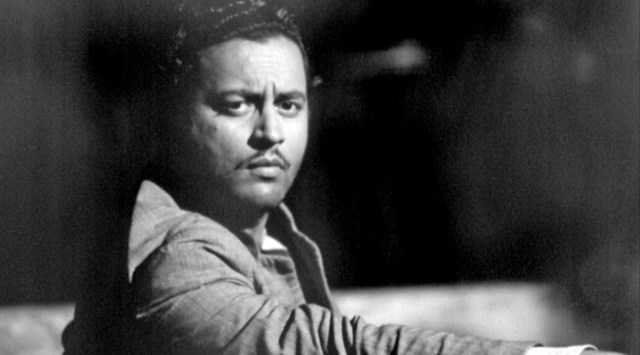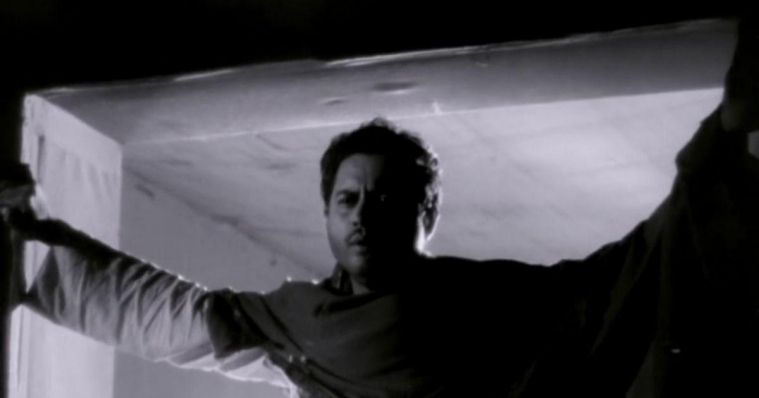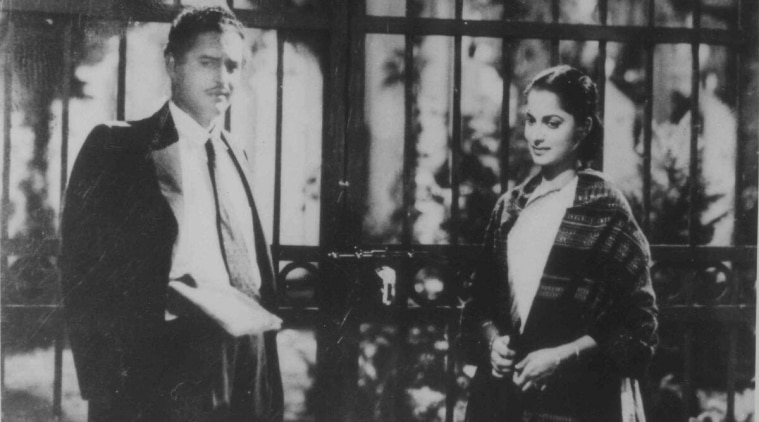Click here to follow Screen Digital on YouTube and stay updated with the latest from the world of cinema.
Guru Dutt believed he was making ‘insubstantial’ cinema before Pyaasa, the film released him from ‘solitary confinement’
On Guru Dutt's 97th birth anniversary, here's revisiting the time when Dutt felt like he had been let out of prison while making Pyaasa.
 Guru Dutt could easily crack the code to 'success', but that was not his idea of happiness.
Guru Dutt could easily crack the code to 'success', but that was not his idea of happiness.When Guru Dutt started making movies in the early 1950s, he instantly understood the pulse of his audience. He understood what could be sold to the masses and make money so his initial offerings were crowd-pleasers like Baazi and Jaal. The audience had a good time at the movies, and the producers made money, but Dutt wanted to do more in his cinema. He polished his craft as an actor and director with films like Mr & Mrs 55 and CID respectively, but all through this, his eventual goal was clear. He knew that the themes that he had explored in his movies until then were “insubstantial” in nature, and he wanted to make cinema that allowed the artist in him to tell stories.
After gaining a fair bit of success, Dutt, in a 1956 interview to Filmfare, hinted that he did not really identify with what was known as the “Guru Dutt-style”. Instead, he wanted to explore “daring themes.” “I don’t want what they call the Guru Dutt style story anymore. I want new themes, daring themes. Hitherto, I preferred to stick to insubstantial themes, in order to perfect a screen style of my own,” he had said suggesting that his cinema was going to change from here on.
 Guru Dutt in a still from Pyaasa.
Guru Dutt in a still from Pyaasa.
Soon after, the viewers were presented with Pyaasa. The film that changed the perception of Hindi cinema and to the extent both the narrative and audience could be pushed as it asked the existential question: ‘What is the meaning of art and life itself?’ Pyaasa had him playing a poet, an artist, who wants validation for his art but as he grows older, his idealistic idea of the new India (which had gained independence just a decade ago), is crushed to bits. His Vijay is deeply affected after he gets his heart broken as the woman he loves chooses to be with someone who is financially secure. This pushes him into an endless existential spiral. When he sees how the country is not able to support the utopian idea that was presented during the struggle for independence, he writes. When he sees how women in this society are not respected, he writes. But who is he writing for? The last straw is when Vijay’s supposed death brings him sudden acclaim and limelight. A firm believer in art for art’s sake, he eschewed the blatant marketing all his life, believing that art to be appreciated for what it is.
Pyaasa gave Guru Dutt the creative outlet that he had been waiting for. He compared his time in movies before Pyaasa to “solitary confinement” and said in a 1957 Filmfare interview, “When I joined films, the wanderer in me was put into solitary confinement and the door of my ‘prison’ was opened only after the release of Pyaasa.”
After Pyaasa’s success, he pushed the envelope even further with Kaagaz Ke Phool. Here, his Suresh is a film director, who is going through a personal crisis. When he falls in love with his film’s heroine, his daughter pushes the woman away so her father and mother can reconcile. But, in the end, Suresh is left all alone – his daughter and the woman he loves are both taken away from him. This triggers an existential spiral and Suresh starts drowning his sorrows in alcohol. Many have called Kaagaz Ke Phool an autobiographical film but Dutt never said so explicitly.
In later years, the film gained the status of a cult classic and was appreciated for its themes and imagery but at the time of its release, it was labelled as a ‘flop’. Dutt’s close confidante Abrar Alvi, in a documentary based on the director, had shared that Kaagaz Ke Phool came at a time when the common man was facing problems of unemployment, and here, they saw a man who had all the riches in the world but was choosing to walk away from everything, and that disconnect irked the audience. Dutt spoke critically about his own film in a 1963 interview to Filmfare where he said, “It was good in patches. It was too slow and went over the heads of the audiences.”
 Guru Dutt and Waheeda Rehman in a still from Kaagaz Ke Phool.
Guru Dutt and Waheeda Rehman in a still from Kaagaz Ke Phool.
The failure of Kaagaz Ke Phool brought an abrupt end to Dutt’s existential journey on screen; he never directed again. He produced and acted in films like Chaudhvin Ka Chand and Sahib Bibi Aur Ghulam in later years and of these two, the latter does examine themes that were first introduced in his two cult films.
Guru Dutt’s life came to an end in 1964; he was only 39. Abrar Alvi has spoken about the last time when he saw Dutt, the night when he passed away, as the director approved a scene and later locked his room.
In what was possibly one of his last interviews in 1963, Dutt had said something that sounds quite melancholic in retrospect, “Fame… is a some time thing. It, like everything else, shall pass.”
Dutt wanted more from his movies, and he knew that from the start. Fame and money were not what drove him and in a 1956 interview, he accepted how his films had been successful but that success somehow frustrated him. “My films have met with a fair measure of success. But the feeling of frustration increases. The consciousness is always there, that what has been done is not sufficient, that better and better films must be made, that I must widen the scope of pictures I make.”
- 01
- 02
- 03
- 04
- 05



































